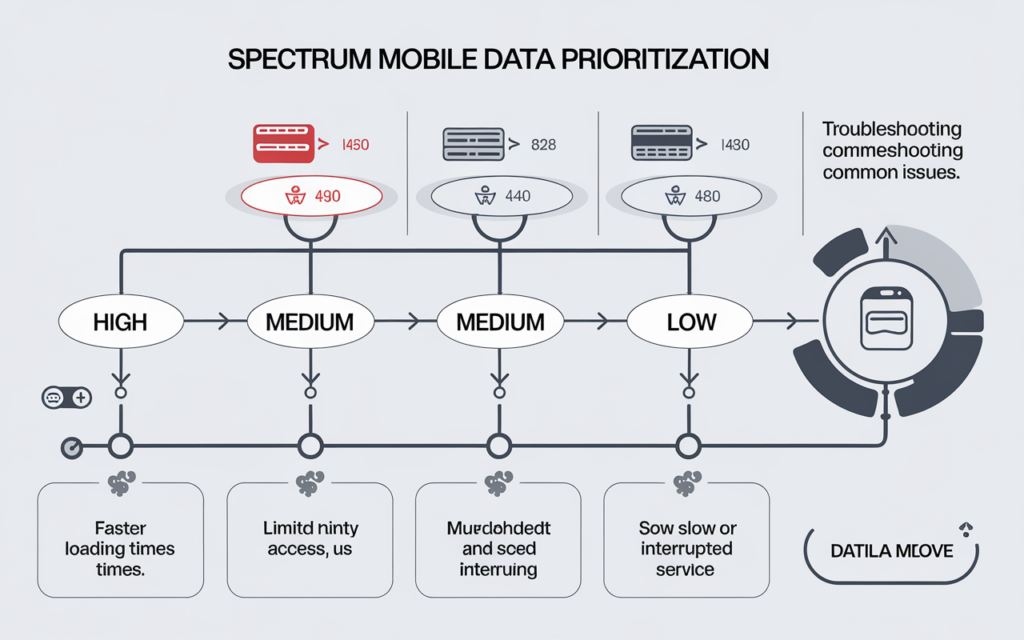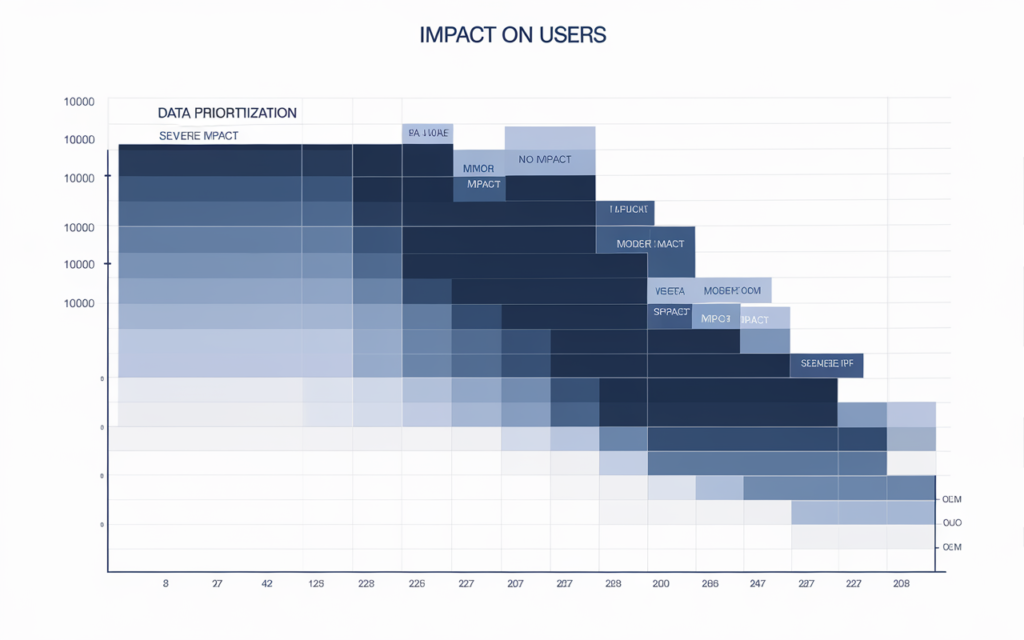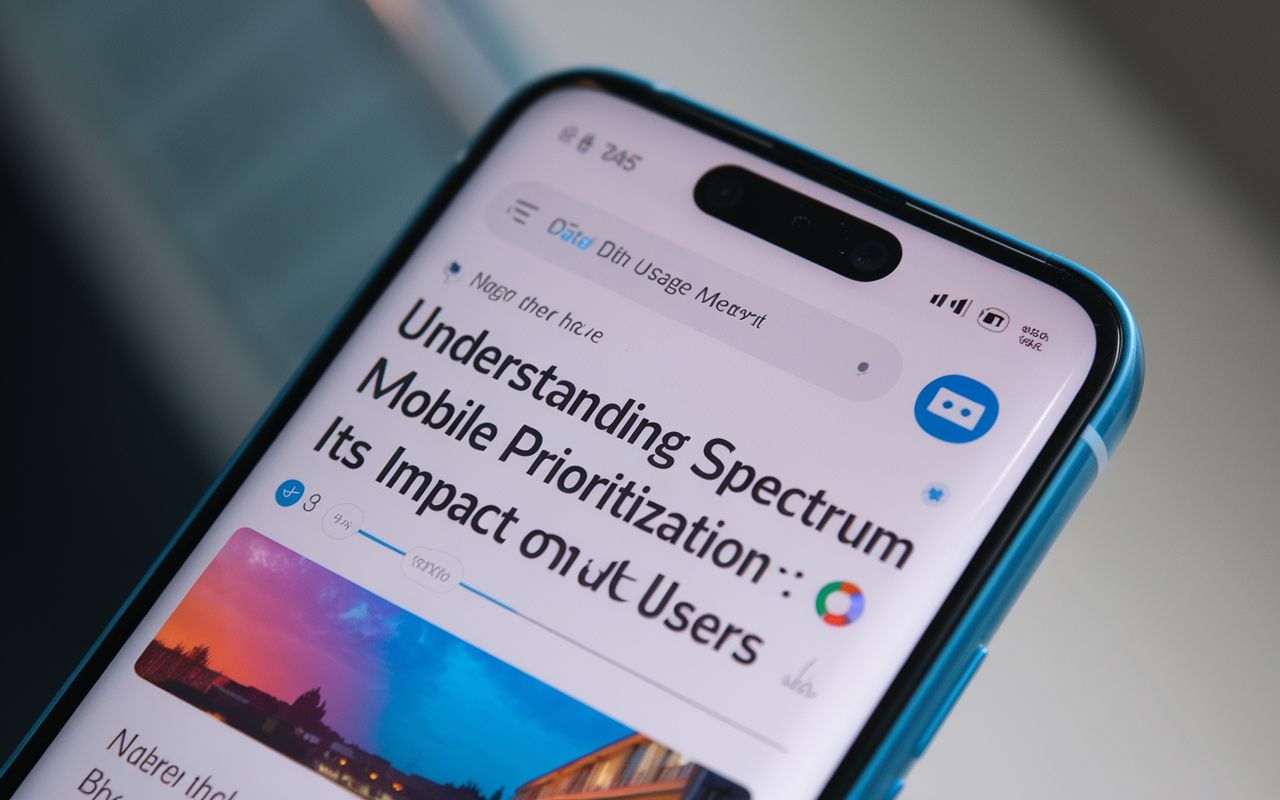Introduction
The wireless marketplace contains Spectrum Mobile as an expanding service provider that provides multiple plan choices to match customer requirements. The mobile experience of users depends heavily on the data prioritization system used by Spectrum Mobile. Every customer interested in choosing the right mobile plan needs to grasp the functioning of Spectrum Mobile data prioritization system to maximize their service quality.
What is Spectrum Mobile Data Prioritization?
The data allocation system of Spectrum Mobile functions through a set of priority-based resource management rules. When networks face congestion, multiple users will get reduced data transfer speed, although select users will obtain premium access. Network traffic management requires this critical approach to handle traffic efficiently and maintain essential operational services during high-demand periods.
Spectrum Mobile functions through Mobile Virtual Network Operator (MVNO) principles to connect its services using bigger network providers. The data prioritization system on Spectrum Mobile provides users with a service that ranks below direct subscribers of the network infrastructure it uses. The data management system produces no impact on regular web browsing, but users can experience decelerating speeds at times of high network usage.

How Spectrum Mobile Data Prioritization Affects Users
Spectrum Mobile data prioritization creates its main effect by restricting network speed during times when the network reaches peak congestion. High network congestion causes customers with lower priority status to receive reduced speeds in their internet connection. Average network speeds become slower because video streaming and gaming, along with large file downloads, may be affected.
Spectrum Mobile’s data prioritization system does not automatically reduce a user’s data speed, but it functions differently under network-heavy conditions. Data transmission at regular speeds equivalent to main-network users is possible for Spectrum Mobile subscribers when the network does not reach capacity limits. A customer’s location, along with time of day activities and the current network usage levels, determines the effects of prioritization management.
Why Spectrum Mobile Uses Data Prioritization
There are several reasons why Spectrum Mobile employs data prioritization. First, it allows for fair and efficient use of network resources. By giving priority to certain types of traffic, Spectrum Mobile ensures that critical services, such as emergency calls and essential business communications, are not disrupted during peak periods. Another reason for Spectrum Mobile’s data prioritization is to maintain affordable pricing. Because Spectrum Mobile operates as an MVNO, it can offer lower-cost plans by optimizing data distribution. It ensures that all customers get a reasonable level of service without requiring the provider to invest in expensive infrastructure expansions.

Comparing Spectrum Mobile Data Prioritization with Other Carriers
While Spectrum Mobile data prioritization may seem like a limitation, it is not unique to this provider. All mobile carriers, including major networks, use some form of prioritization to manage network traffic. However, differences exist in how aggressively prioritization is applied.
For example, some premium plans on major networks may include priority data, which ensures higher speeds even during congestion. In contrast, MVNO customers, including those on Spectrum Mobile, may face deprioritization more frequently. Understanding these differences helps users choose a plan that aligns with their data needs and budget.
How to Mitigate the Effects of Spectrum Mobile Data Prioritization
Network management utilizes Spectrum Mobile data prioritization systems as a core procedure, but users can adopt specific steps to reduce these effects. The most successful method consumers can use to minimize data prioritization effects is Wi-Fi connectivity. Under the Spectrum Mobile service, users gain unlimited access to thousands of Wi-Fi hotspots so they can escape mobile data prioritization rules easily.
Users should examine their data usage patterns to determine times when data usage is minimal and avoid those periods. The speed of your internet connection remains higher when you perform video streaming or large file downloads during times that are away from high-traffic periods. Upgrading plans with better high-speed data availability before the priority deprioritization period can be a solution for users who wish to maintain their speed levels.
Spectrum Mobile Data Prioritization and 5G Technology
With the rollout of 5G technology, Spectrum Mobile data prioritization may evolve to offer better performance for users. 5G networks have greater capacity and lower latency, reducing the likelihood of congestion-related slowdowns. However, prioritization policies will still play a role in managing network traffic efficiently.
Spectrum Mobile users should keep an eye on developments in 5G service availability and how it affects their experience. While 5G may lessen the impact of data prioritization, understanding its implications remains important for those relying on mobile connectivity for work, entertainment, and communication.

Common Myths About Spectrum Mobile Data Prioritization
There are several misconceptions regarding Spectrum Mobile data prioritization. One common myth is that deprioritization equates to throttling. In reality, deprioritization only occurs when the network is congested, whereas throttling involves a hard cap on speeds regardless of network conditions.
Another myth is that Spectrum Mobile data prioritization makes the service unusable. While speeds may be temporarily reduced, most everyday activities like browsing, messaging, and social media remain unaffected. Understanding these distinctions helps customers make realistic expectations about their mobile data performance.
Customer Experiences with Spectrum Mobile Data Prioritization
Customer feedback on Spectrum Mobile data prioritization varies based on individual usage patterns and location. Some users report minimal impact on their daily activities, while others notice slower speeds during peak hours. Factors such as urban density and overall network demand influence these experiences.
Many customers appreciate the affordability of Spectrum Mobile plans and consider data prioritization a reasonable trade-off. By understanding how it works, users can make adjustments to optimize their mobile experience.
Final Thoughts on Spectrum Mobile Data Prioritization
Limiting the speed at which mobile network users access data is a fundamental network management practice that influences communication speeds for all mobile users. The system of speed prioritization enables Spectrum Mobile to maintain affordable rates together with extensive network reach.
By leveraging Wi-Fi, monitoring usage habits, and staying informed about network developments, customers can mitigate the effects of prioritization. Mobile technology development will reduce the impact of Spectrum Mobile data prioritization while providing users with improved performance overall.
Everyone benefits from understanding Spectrum Mobile data prioritization because it helps customers select their mobile plans with better awareness. Users who understand Spectrum Mobile’s prioritization policy will choose the right plan based on Spectrum Mobile’s affordability and other carriers’ premium data options.
